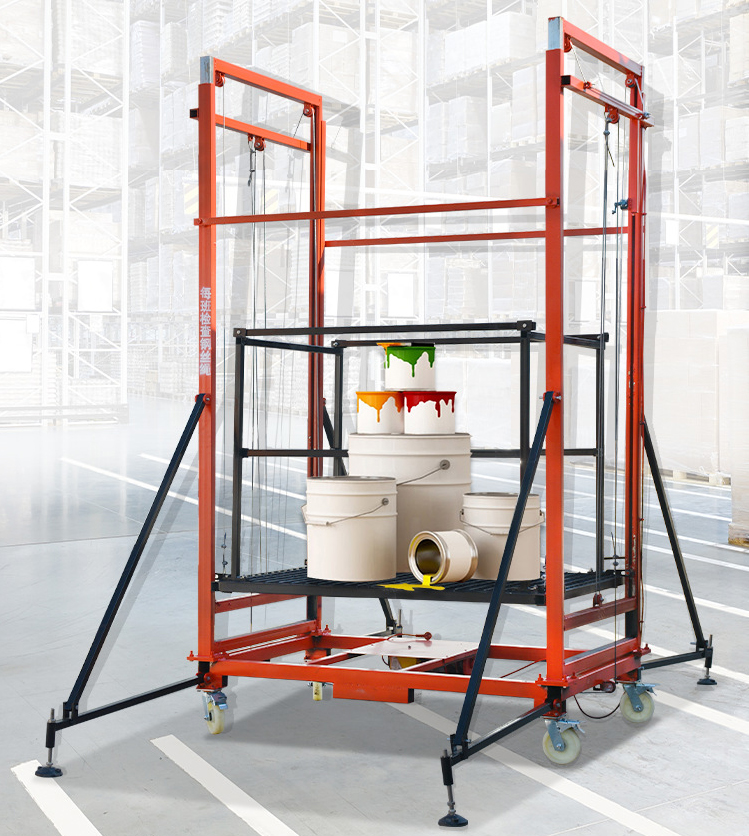The electrical system of electric scaffolding typically involves the integration of power supply, control mechanisms, and safety features.
Here’s a general overview of how the electrical system of electric scaffolding works:
Power Supply: Electric scaffolding requires a power source to operate. This power source is typically an electrical outlet or generator. The scaffolding system is connected to the power supply through appropriate wiring or cables.
Control Mechanisms: Electric scaffolding may have various control mechanisms to operate different functions. These controls can include switches, buttons, or levers that allow users to activate or adjust the movement of the scaffold, such as raising or lowering the platform, extending the reach, or controlling the angle of the scaffold.
Motorized Mechanisms: Electric scaffolding utilizes electric motors to drive the movement of the scaffold platform or other components. These motors are usually powered by the electrical supply and are controlled by the user through the control mechanisms mentioned earlier. The motors provide the necessary power to move the scaffold in the desired directions.
Wiring and Circuitry: The electrical system of electric scaffolding includes wiring and circuitry to distribute power to different components and control mechanisms. Wiring connects the power supply to the motorized mechanisms, control switches, and safety devices. Circuitry ensures that the electrical current flows in a controlled manner and protects against overloads or short circuits.
Safety Features: Electric scaffolding is equipped with various safety features to protect users and prevent accidents. These safety features can include emergency stop buttons, overload protection, limit switches to prevent the scaffold from exceeding its safe operating limits, and safety interlocks that disable certain functions when specific conditions are not met.
Remote Control (Optional): Some electric scaffolding systems may have a remote control feature that allows the user to operate the scaffold from a distance. This can be particularly useful when multiple scaffolds are being used or when the operator needs to have a clear view of the work area.
It’s important to note that the specific design and functionality of the electrical system may vary depending on the manufacturer and model of the electric scaffolding. Users should always refer to the manufacturer’s instructions and guidelines for proper operation and safety precautions when working with electric scaffolding.
How does electric scaffolding differ from traditional scaffolding?
Electric scaffolding, also known as powered scaffolding or motorized scaffolding, differs from traditional scaffolding in several ways. Here are some key differences:
Power Source: Electric scaffolding relies on an electric power source, such as an electrical outlet or generator, to operate the motorized components. Traditional scaffolding, on the other hand, does not require any external power source as it is manually assembled and does not have motorized functions.
Motorized Movement: Electric scaffolding incorporates electric motors that enable motorized movement of the scaffold platform or other components. This allows for easier and more precise control of the scaffold’s height, reach, and angle. In contrast, traditional scaffolding requires manual adjustment and positioning by workers through physical labor.
Adjustability and Flexibility: Electric scaffolding offers greater adjustability and flexibility compared to traditional scaffolding. The motorized features allow for smooth and controlled height adjustments, extension or retraction of the scaffold reach, and the ability to position the scaffold at various angles or inclinations. This makes electric scaffolding suitable for projects that require frequent changes in working height or reach.
Increased Efficiency and Productivity: The motorized functions of electric scaffolding can significantly enhance efficiency and productivity on job sites. The ability to quickly and precisely adjust the scaffold height or reach reduces the time and effort required for manual adjustments. This can result in increased productivity and reduced labor costs.
Safety Features: Electric scaffolding often incorporates various safety features not typically found in traditional scaffolding. These can include emergency stop buttons, overload protection, electric scaffolding for sale limit switches to prevent the scaffold from exceeding safe operating limits, and safety interlocks that disable certain functions under specific conditions. These safety features help enhance worker safety and reduce the risk of accidents.
Remote Control (Optional): Some electric scaffolding systems may offer remote control capabilities. This allows the operator to control the scaffold’s movement from a distance, providing better visibility and easier operation, especially in situations where multiple scaffolds are being used or when the operator needs to have a full view of the work area.
It’s important to note that while electric scaffolding offers advantages in terms of adjustability, efficiency, and safety, it may not be suitable for all applications. Factors such as project requirements, budget, and site conditions should be considered when deciding between electric scaffolding and traditional scaffolding.
